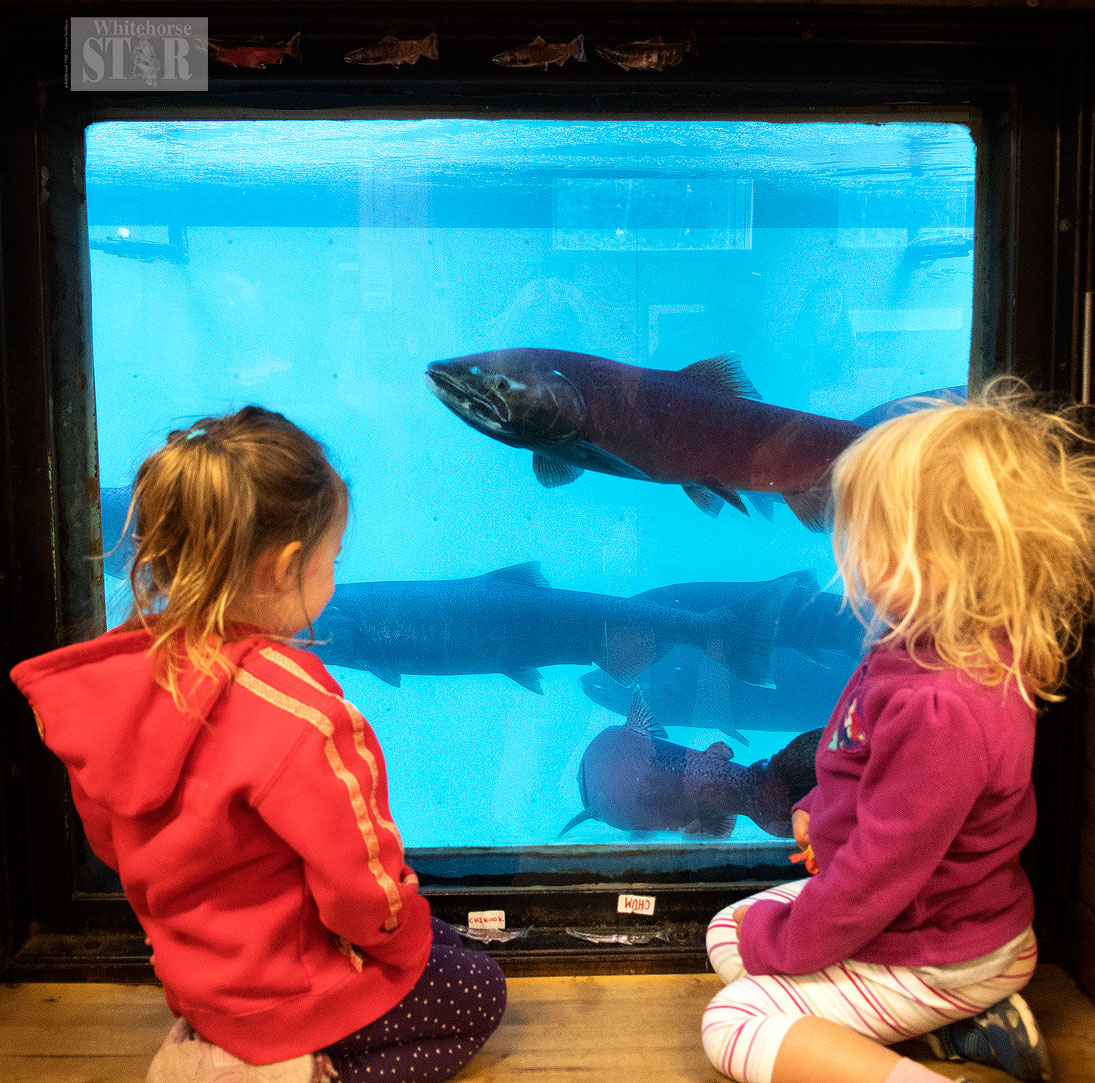
Photo by Vince Fedoroff
WONDERS IN WATER – Youth enjoy the view of the salmon in the Whitehorse Rapids Fishway in August 2017. This year’s run of Yukon River chinook is coming in at numbers toward the top of the pre-season estimate.

Photo by Vince Fedoroff
WONDERS IN WATER – Youth enjoy the view of the salmon in the Whitehorse Rapids Fishway in August 2017. This year’s run of Yukon River chinook is coming in at numbers toward the top of the pre-season estimate.
This year’s run of Yukon River chinook is coming in at the higher the end of the pre-season estimate by scientists involved in salmon management.
This year’s run of Yukon River chinook is coming in at the higher the end of the pre-season estimate by scientists involved in salmon management.
As of mid-week, the sonar situated at Pilot Station, located in Alaska 198 kilometres kilometres upriver from the mouth, had estimated more than 207,000 chinook had gone by.
Alaska officials were estimating Wednesday that 95 per cent of this year’s migration was past Pilot Station.
Tuesday’s count of 868 chinook passing the sonar was the lowest daily count since June 5, when 926 were counted. The highest daily count was 18,912, recorded on June 30.
The sonar on the mainstem of the Yukon River at Eagle, Alaska, just downriver from the Yukon-Alaska border, went active on July 1. It recorded 97 chinook that day.
As of midnight Tuesday, the highest daily count of 494 was recorded Monday, with the total as of Tuesday sitting at 2,303.
The minimum spawning escapement goal on the Yukon side of the border along the mainstem has been set at 47,500 chinook.
The poor chinook returns in recent years have prompted more conservation efforts on both sides of the border.
There has not been, for instance, any commercial fishing for chinook in the Yukon and Alaska for several years.
Yukon First Nations have also encouraged voluntary conservation efforts in their Indigenous food fisheries for several years now.
Twenty-five years ago, it was not uncommon for the food fishery to take 8,000, 9,000 or 10,000 chinook, with the commercial fishery out of Dawson City catching the same or more.
In 2014, for example, the Yukon’s Indigenous food fishery harvested just 100 of the king salmon, mostly for ceremonial purposes.
Spawning escapement goals along the mainstem of the Yukon have been achieved in the last five years, with an estimated high of 82,674 chinook reaching the spawning grounds in 2015, the same year the Indigenous harvest came in at 1,000 fish.
Last summer, escapement was estimated at 54,474 while the food fishery harvested 2,790 chinook, according to records.
It was in 2013 when the Yukon last missed the escapement target for the mainstem when an estimated 28,669 chinook made to the spawning grounds.
The Canadian border on the mainstem of the river is 1,970 kilometres from the mouth, and Whitehorse is 2,800 kilometres from it.
The Yukon River chinook salmon migration is said to be the longest in the world.
In order to encourage thoughtful and responsible discussion, website comments will not be visible until a moderator approves them. Please add comments judiciously and refrain from maligning any individual or institution. Read about our user comment and privacy policies.
Your name and email address are required before your comment is posted. Otherwise, your comment will not be posted.
Comments (2)
Up 13 Down 3
Miles Emerson on Jul 14, 2019 at 11:44 pm
Canada and the US will have to rebuild Chinook stocks over many generations.
It's best if the fish are given the chance to do it themselves through increased spawning escapements which means a hard line on catches for a long period of time.
Up 17 Down 9
Seth Wright on Jul 12, 2019 at 6:10 pm
Eliminate commercial and sport fishing. Allow only individual sustenance fishing. Watch those stocks return.